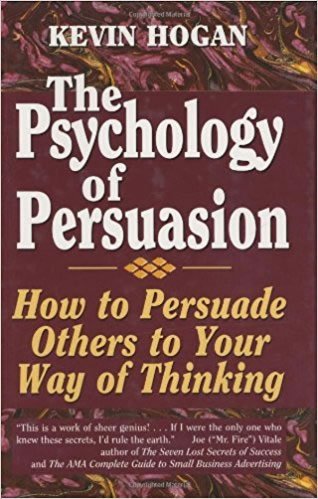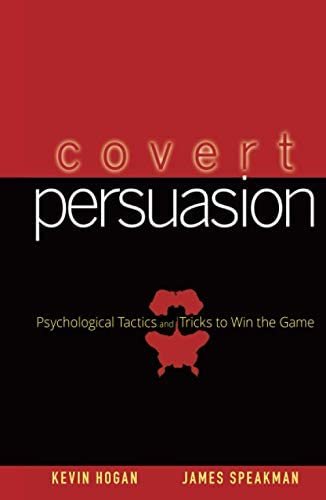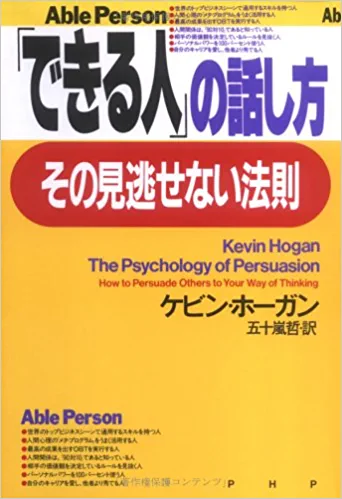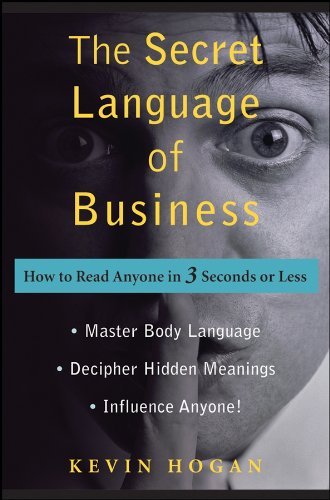
High Level Negotiation Skills
1. Change the Rules?
David who one day would be King of Israel, changed the rules. He couldn’t possibly beat Goliath in battle. David was no fighter. He found a sword and armor awkward. He had a 0% chance of winning as a traditional warrior. So David changed the rules. He used a sling and a stone and took his opponent out. Had things things played out in Goliath’s favor, the world wouldn’t be the same. There would be no Jewish or Christian religion.
The story is one of the great lessons in life and how people think or fail to think. If you’re going to be fighting popular opinion, trying to unseat someone or a company that’s got a lot more money, time or resources of any kind you MUST find the David Factors. They aren’t instantly obvious to most. In every online course I train, you find out that changing the rules is often the difference between winning and losing.
Caveat: David changed the rules and used the element of surprise by picking a weapon that Goliath wasn’t expecting or prepared for. You can do this once and win. The second time your opponent will be ready for you and he will emerge victorious.
Remember: Everyone has access to google. Information doesn’t make you wealthy, successful or happy. It’s how you use information, then devising a plan that accesses an understanding of how to appeal to human nature and framing all that you do to thinking in terms of not how YOU will make them change but how THEY WILL CHANGE and how YOU will mold your Self into being the key to fit THAT KEY HOLE.
It takes years to develop this way of thinking, but you can start today and you probably can always apply to Inner Circle if you want to see it happen in real life.
2. Attack a Very Small but Visually Devastating Aspect of The MUCH Bigger Symptom
Today you’re going to experience a seriously cool sliver of a presentation I gave to capture a big piece of business for a company in Europe.
The principle is simple. People, including business people and groups of people do not respond well to big numbers. You need to target those numbers at a very isolated set of pixels in a photo THEN show how the picture is NOT OK, in fact it is a disaster. But you’ll never say that. It will be blatantly obvious because as you shrink your target it is much, much easier to hit. THEN you TELL THE RIGHT STORY and OFFER A TINY PIECE of YOUR SOLUTION so it is OBVIOUS to everyone what course of action is.
In military terms Alexander the Great pulled this off brilliantly.

3. Make it Impossible to Say No
Use of questions in negotiation and all forms of persuasion is critical. There is a time and moment for rhetorical questions. There is a time and moment for SHARPLY DIRECTED QUESTIONS with ONLY 1 CHOICE that IS SENSIBLE because ALL other CHOICES are emotionally impossible to live with.
Elite training is just that, for the finest minds, and those who will wield power wisely.
First I give you a partial example of a tool I have only shared with this group of a dozen or so, and at six other high level meetings, including my Inner Circle. Then I will show you what to do next in less complex negotiations. Today’s article assumes you will be given the floor FIRST and that you are guessing you don’t have as strong of a position as they do.
This bite of the David vs. Goliath Negotiation Pattern is potent when you speak first. I offer an example you can emulate. We’ll put the entire protocol in a new program this spring.
Ready for one of my real life clients and how we dealt with their massive negotiation?
Turn the page…
The European Negotiation Drama…
Situation: Company X owns 47 apartment/condo complexes in 6 countries. They range in size from 80 – 900 units. The company I want as my client is not making more money than they did last year, they are not breaking even. Their profits are diminishing as are the underlying assets. It IS their “fault” but in most locations it is something my company, Y, can and will fix and as you will see, David will strike at Goliath (the currently contracted property management company) ethically and painfully.
What follows is a heavily edited transcript from the first 7 minutes of a 40 minute presentation. Some of the facts obscure participants.
“Today you are going to be told by my opponent that there are compelling reasons to continue working with them and not making the change to work with us. You can understand their concern. While they are bigger than we are, they have failed in a task they should have easily managed giving their size. In fact they will tell you that because we are a smaller company than they are, that alone is a good reason to not switch property management.
“Obviously that is an emotional argument, it leans into your hoping that they can do better after losing millions FROM YOU in what should have been a flat or profitable period. There is no justification for what they will suggest. Size matters and it matters a lot. The size of your LOSSES are dramatic in nature and should never be experienced again. To have tolerated them this long bothers me a bit, but I understand the notion of staying with a sinking ship… but not longer.
“We want to manage your 47 properties around the globe. This is obviously more than just an ‘important decision’ because making the wrong decision could cost you MORE millions of dollars. After I show you how your properties are being abused you will be told that they were not fully aware of the pain your buildings have suffered and that alone should be all you wish to hear from them. In a moment I’ll give you one small example of a much bigger problem you are stuck with at the moment. Yes, you can always see BIG problems once they are there. No question. Anyone can. But setting in motion an approach that will bring you certain improvement is where we will begin in a moment..
“The facts will speak for themselves and you’ll see live video of one of your abused properties in just a moment.
“Today I want to show you just how your current company appears to be taking advantage of your good nature. Perhaps they are not. Perhaps all of the problems that you don’t even know you have yet are simply too well hidden to be seen. You will determine that. I will only highlight three properties then send you an email with our current estimate of the exact situation with your other 44 properties.
“Let’s begin with what has happened this year that isn’t in their annual report to your company. We sent our people to various properties they manage for you at our expense of course.
“For example, we visited your 200 unit complex in Manchester and discovered this. As you can see on July 7, there were people on the sidewalks in front of your complex. You can see how people were diverted from their getting from here to there. They must have been awfully uncomfortable. I know I was when I saw this image. Here is a photo of graffiti all over on the north side wall the same day. Here is what a gang member in town said it means. Please forgive his language, he is simply answering a question. And indeed he is telling the truth. It is a territorial claim by the south side gang.

“Let me say that again, YOUR APARTMENT COMPLEX which did 3.6 million Euro’s last year and now has an occupancy rate of 87% after having been over 90% for almost a decade is now claimed by the south side gang in Manchester as essentially THEIRS. As you know they don’t want to own your building, they simply want street level possession and access to the inside for the purpose of theft and similar activities. With the number of units you have open in this complex you can imagine how easy it would be to set up shop in one of your flats that isn’t shown to inquiring renters.
“That means the morning, sometimes before July 7, that graffiti was spray painted on YOUR building, it was not removed. We returned one month later and found this in August. Not only had it not been painted over, it had not been touched in any way. The property was still claimed by the gang and everyone knows it. People continue to sleep on the sidewalks…
“Your current property management company charges you 400,000 Euros annually for this specific property and has charged you that for at least each of the last four years. That means you paid 400,000 Euros when your complex grossed 4 million Euros and you paid 400,000 when your complex grossed 3.6 million Euros. And now that management company has not seen fit to remove the graffiti in seven months. Here is a photo that our contact in Manchester took this morning. You can see the newspaper is from today and the graffiti remains.
“The crime rate in Manchester has risen significantly in the last year. Part of that reason is lazy ownership of rental properties. Part of it is property owners who are told everything is fine from their local people. Everything is not fine. Crime is higher and it’s now a crime friendly neighborhood which is why you’ve dropped from 93% to 87% in four years.
“They have obviously not given you a plan on dealing with this or you would have fired them last year. No one told you. You had no idea.
“Today they will propose to ‘fix it’ but to give them that chance after making your future a mountainous climb, they should refund every pence of that 400,000 Euros for each of the last four years and that is just from this property.
“87% capacity is not acceptable. Neither is 93%.
“And neither is 400,000 Euros. But wait. 400,000 Euros at 94% capacity IS acceptable. In fact not long ago, you had 94% of capacity and grossed over 4,000,000 Euros. At that time, your current management people were doing a good job. They got old and lazy. They’ve simply ignored you for the last four years. The’ve ignored the tenants, the building, the message the building represents to the community and city as a whole, making you look like a low rent dump and they have not demanded you to pay them less while they fix your mounting problems.
“One of our people showed me the inside of the Manchester complex yesterday via Facebook video and I thought it could be a very nice place again. The security in the complex is obviously poor as you will see video of in a moment.
“Where I’m from, all of this means they don’t care about you. It’s that easy.”
“The reason they will tell you that our fee is too low is because theirs is too high. In fact what you are paying them is outrageous. The simple math reveals that drop from 93 to 87% is really 250,000 Euros. The average capacity in Manchester apartments in the same price category is 91% and was 91% four years ago. That means that the market hasn’t changed but your revenue from THIS property has dropped annually by 250,000 Euros.
“They have not only been paid 400,000 Euros annually for this property but they have stripped 250,000 MORE Euros from your company through ignoring the property. It didn’t cost you 400,000 but 650,000 Euros to have this company work for you, just last year.
“I want to show you a live video now on a page that is only visible on my Facebook page. This is William Renault and he is a contractor we are paying 50 Euros to today. He has a paint can in his hand and has matched the color of your apartment to the paint and that’s him waving hello. He’s now covering up the gang graffiti and as you can see he’s almost done… and voila. The apparent sheen from the paint will vanish by nightfall no one in Manchester will be able to see the paint and more importantly, the claim of your apartments as the territory of the gang members will be gone from your building. They will be there within the week and they will paint again and Renault has been retained by us to keep your building free of graffiti for the balance of the year. The fix up took less than 3 minutes. He will spend 3 minutes about 8 or 10 times this year before the gang gives up on the complex and goes for easier pickings.

“We don’t want to charge you 360,000 Euros to manage your Manchester property. It’s a property will be worth 410,000 in fees as soon as it has returned to 94% of capacity. We will ask you for that fee at that time. But first we need to STAY at 87% then move up to 88% and then 89%. And so on. The graffiti is only one symptom of a much bigger problem. There are numerous others just like this on the inside. It’s very sad that William was able to get into your secure building in less than 6 minutes. That video is in your Email right now. I’ve also sent you video from various floors in the complex, the laundry room, the furnace room as well as the swimming pool that people once loved and now won’t go near.
“As you’ll see, your complex has no chance of retaining even 87% at current prices for the balance of the year.
“Hiring us today will require a fee of 360,000 Euros for Manchester. For that we will repair every major and minor disaster that you will watch in your video email. We’ll do it in the first 30 days and send you video showing you exactly what we did with every major an minor disaster in just this building.
“The financials and the general direction is the same for almost all of your properties. And we want to manage them all. We don’t need to manage them all today. We have laid out a plan where we will take over 10 properties every 3 months until we have all 47 by autumn next year. At that point the problems will be eliminated. The properties will return to average or better for each market or we will ask you to feel free to replace us on those properties. One thing is certain, and that is that we won’t cost you 650,000 Euros, we will charge you 360,000 and increase that number over time, never charging a penny more than 10% of vacancy gross.
“You have almost 50 properties and Manchester was randomly chosen as were the next three properties….please open your video email now. I will leave the room for a few minutes to give you some privacy. (Depart/return)
“May I ask you a question? (heads nod.)
“Do you want me to continue or would you prefer I leave now?” (affirmation from directors)
Once you have made it almost IMPOSSIBLE to leave your story you can ASK FOR PERMISSION TO CONTINUE.
But walk “in the door with THIS:
on the next page…
You can see that long before I walked in the door a great deal of problem identification had to be done. A MAJOR DRAMA had to be created and then the results of our efforts had to be applied QUICKLY, SHARPLY, INTENSELY and with grand elegance. If any one element had not been present, the outcome would have been very different.
You never walk in unprepared. If you’re presenting first you are not in reactive or responsive mode and therefor script out your plan step by step.
You have gathered all the intelligence you possibly can. You know their EXACT SITUATION, their wants, needs, desires, hopes, fears as well as they do. You worked hard to get to this point. It’s NOT a 40 minute presentation, it’s a 6 month project that climaxes in 40 minutes.
You are now AT the table and ready to negotiate.
It’s human nature to want to be heard and understood. It’s also human nature to want to go first – but if you want to be effective in negotiation, you quell that instinct.
Going first means you must be perfect. You must be able to present YOUR SIDE AND THEIR SIDE because that is precisely what you will do.
Most negotiations are not going to be as intense as the above drama!
Negotiation is in part about using the correct dose of power, avoiding force.
Letting the other person share their views, needs and desires first, does a few things.
The next page shows you what to do so you WIN
Continue…

Negotiation Skill: Be First to Listen, Think and Reduce Resistance
- It puts you in a stronger position. When you start the conversation by saying, “What do you want me to know?”, you reduce resistance. This allows the person to communicate their thoughts, feelings, ideas, dreams, outcomes, goals.
- Listening “first” allows you to reshape your communication so that it is based on what the other person tells you. You may guess that your customer wants a refund because she didn’t like the product, when in actuality the color or shade was wrong and she would happily accept an exchange for something that was out of stock when she made her original purchase.Always ask to find out what the real problem is. Some people don’t want you to know. Some people don’t know themselves. Some people will be honest with you with open communication.
- You have a great advantage. By listening instead of talking there is almost nothing that the other person can be frustrated with as far as your impending proposal. Strive to listen first. Most good salespeople who negotiate regularly are aware that the “first to name a number” is at “disadvantage.” There is some truth to this. The benefit of listening is that you find out early what the other person/group wants, needs and desires. It’s then a lot easier to give them what they want while you get what you need to take away.
- Listening first means you are likeable. No one listens first. It’s rare. It’s not even easy for most people to listen. And importantly, it’s polite to let the other person go first. By going last, you come across as likeable and polite if you step back.
Listening doesn’t mean you shut your mouth and wait until the other person is done talking. And, the last thing you want to do is drone on about your own thoughts, feelings and beliefs about why you are right and they are wrong. Instead, listening means you truly seek to understand their point of view, and what motivates them.
What follows are some specific behaviors you can exhibit to foster a favorable outcome.
What you can do …
Negotiation Skill: Listen with Fascination, Curiosity, and Focus
Feed back portions of conversation to the other person that show you understand at many levels. Reflecting verbatim messages can be important. Being certain that you have captured the intent of communication is even MORE important.
Do you understand WHY and WHAT they want? Could you articulate it effectively and be compelling with an independent party? That’s how you know you have access to their perspective.
When they see that you understand them at a deep level, you are able to be on their wavelength.
EVERYONE SCREWS THIS UP.
Let me give you an example from this week at a personal level.
“You don’t even understand what I’m saying.”
Here’s HOW YOU PROVE that you DO know what they are saying-
On the next page…

“OK, tell me if this is close to what you are thinking. Maybe I’m way off base. First you are suggesting that recycling in Europe is something you are familiar with. It’s important because you want to make a contribution to the planet and this is important. You think I was suggesting that American’s recycle with superior technology and that is irritating to hear because after all American’s do everything better than Europeans. This causes you to think that this is typical of American’s thinking they do everything better than everyone. You wonder how I, like most Americans, are arrogant and wonder if there is anything we do that is inferior to Europeans. And the summary is this makes you very frustrated dealing with me.”
“Yes but I am not sure you REALLY understand that.”
“Hmm… I can understand that. Is there anything additional I could share with you that would help create a bridge here? Because I can give you a list a mile long of things the American government completely sucks at. Stuff no European government could be more idiotic about….ever.”
“Not really. But I still don’t feel good.”
People NEVER feel good when there is a “right/wrong” conversation. Obviously if they are being told they are wrong you are essentially telling them they are mentally deficient and they are generally stupid because they wouldn’t believe something that is “wrong.” NO ONE would. THIS PIECE must be understood by the negotiator because most people DIE not realizing this critical fact of communication.
Once you have created a frame where they can in some way be “correct” you can continue.
“Then it’s OK to take a chance that you are receiving accurate information from me, only as far as my understanding your frustrations and nothing else, until you hear otherwise?”
Now this IS CRITICAL.
If the person you are negotiating with believes you have a hidden agenda or are lying for some reason, there is NO POINT to continue. Nothing positive can happen.
But if the person allows you to open the door of agreement about understanding on this ONE piece, the negotiation can move forward.
And it’s RIGHT NOW that YOU usually FEEL like YOU should be HEARD.
GET OVER IT.
If you want to be the best negotiator, the best communicator, the wisest trainer, teacher, educator, you will have long ago recognized that how you FEEL means ALMOST NOTHING to achieving success in negotiating a positive result for both of you.
If 1/1000 people have learned ONLY the skills that are discussed in this article, then the chances that TWO people know them is 1 in 1 MILLION.
In other words, if YOU GET IT… they almost certainly do not.
So you have to take the role of your advocate AND their reframer, advocating for their position.
You might be thinking, “Hey, what about my wavelength?”
Once again, never confuse your emotional need to verbalize with the results you want to achieve. You’re negotiating. The only thing you need is a positive result. Winners don’t need to be right, they simply win…hopefully for both parties.
Negotiation Skill: Just Ask
The most effective strategy to reduce the amount of words you verbalize is to ask questions.
You ask questions, so you can be certain their viewpoint, their experience and perspective is clear. You ask questions so you can be certain of their outcomes.
Asking questions also frees you from the very risky behavior of completing their sentences for them.
In the right setting and done carefully, completing their sentences could be helpful, but it can back fire. It’s almost always better to ask questions instead.
While they are verbalizing, listen from their perspective. Think about what and why they believe or feel what they are expressing. How did they come to this point?
Understand the track of their thinking from time intervals that happened earlier than today. Think about how they came to the point they are at today. See if you might come to the same point. The closer you can observe from their perspective, the more likely you are to gain a mutually favorable outcome.
Whatever you do, avoid the temptation to jump in, to defend, argue, or convince unless it is absolutely necessary.
Sometimes you may find that the other person just wants to be heard, and once they feel you’ve listened to them – truly listened – no further action is required!
When things get out of hand …
Negotiation Skill: Be Mostly Positive
There are definitely moments when blowing up or being intensely heated in a conversation can be advantageous. BUT, in general, it’s better to keep your emotions in check.
 Think about the last time you watched someone chew out a customer service representative at the store.
Think about the last time you watched someone chew out a customer service representative at the store.
Think about the concept. Bill goes into a store angry that his TV doesn’t work and he’s going to yell at a customer service rep making $12 an hour. The CSR of course has absolutely nothing to do in any way with Bill’s TV. He’s never seen Bill or the TV. He’s an employee of the electronics store and that is it.
You and I look at these out-of-control people with a mixture of pity and embarrassment. But you also look at them and think, “Don’t they know they’re alienating the one person who can fix their problem?”
Think about it. Bill wants his TV to work.
- Bill begins yelling and telling the CSR that he is going to have him fired if he doesn’t get the TV fixed fast or
- Bill COULD approach the CSR calmly and politely, asking Bill for his assistance in meeting Bill’s desired outcome.
Who would YOU be more likely to go out of your way to really help?
Customer service people are often the lowest on the corporate totem pole. They typically aren’t particularly well-paid. They don’t have a lot of seniority. They don’t have a ton of power.
But one thing that they can control is how much they’re willing to go out of their way to help you out. Be rude and nasty, and they’re going to slam the virtual door in your face. Be kind and polite, and you just may find out that some rules are bent in your favor.
Negotiation Skill: Maintain Control
Remember, this is not to say there isn’t a time and a place for getting angry, or escalating the issue. But you need to be in CONTROL of yourself. If the person you’re negotiating with is actually fearing for his or her personal safety, they’re not only going to shut you down, they may call Security on you as well!
If you feel yourself losing control or spinning into anger, step away. Let the other person know your emotions are getting the best of you, and you’ll get back in touch when you’ve calmed down a bit. If this sounds like you have to bite back your pride, so be it. It’s a lot easier on the ego to take a five minute break, rather than looking like an idiot in front of a store full of people.
Keep reminding yourself of your ultimate outcome. Your outcome is not to make the other person back down or feel bad.
Your outcome is to get as much of your desired result as possible. Unless it is obvious to the contrary, view the other party as your ally, not your enemy.
When it’s your turn … you’re up!
You Are Now Up to Bat…
You may think that once the other person has had their chance to share their position, it’s your turn to erupt. Being prepared reduces such outbursts.
How you share your position has a significant weight on the ultimate result of the conversation.
Negotiation Strategies
Here are some tips for sharing your perspective:
- Quell defensive behavior. You might be inclined to start out by telling the other person just how wrong they are. Stop! Defending your position or attacking them puts you on opposite teams. You are in search of a win-win, so find something, some point, no matter how small, about which you can agree. It could be as simple as, “I agree with you that Kayla and Kenzie have a later curfew. I’m willing to talk about this with you.” This lets the other party know you heard them and you are searching for common ground.
- Ask for help. One valuable technique is to ask the person to help you.”I’m having trouble with the way shifts have been scheduled for next week. Can you help me understand?” Bring the issue to the table without making the other person the enemy. Allow the person to be on your side. People, particularly those in customer service, like to help when they can. Help them feel useful and powerful.
- Ask for what you want. Make your request clear so there’s no question what you see as the desired outcome. “I’d appreciate it if you could reverse the charges this month and help me figure out how to lower my overall bill”, for example, is a much more powerful statement than, “I got charged for 100 texts this month.”What you want is clear in the first request. The second leaves nowhere for the other person to go. They could easily reply with, “So?”
- You will need to give them more information before they can do anything, so why not make your request clear?
- Be quiet. One of the worst things you can do in negotiating is to negotiate against yourself. Once you’ve made a request, be quiet. Let the other person respond. If you keep talking, you will keep conceding, often unnecessarily. In order to calm the urge to talk, some salespeople tell themselves that every word they speak costs them money. Often, that’s true!
Knowing how to properly phrase your own request is key to successful negotiating.
Being able to share your thoughts and feelings without alienating the other person will help you maintain a position of strength and not give away unnecessary concessions.
Negotiation Skills are Universal
Negotiations take place all throughout your life. You have interactions with your family and friends. You negotiate with co-workers, clients and bosses. While it is possible to use brute force, loud voices and the intimidation factor to try to get what you want, there are more successful, and less intimidating, methods.
It can seem overwhelming at first, but pick one skill or principle each week to focus on. After being involved in a negotiation, review how it went.
What worked?
What didn’t?
What can you do differently the next time?
Where did you lose your cool?
When did your Emotional Intelligence become challenged?
Negotiating in good faith means giving people what they need, if possible. More often than not, you don’t want to shut the other person out.
What you do want is for you to “win” and be certain the other person “wins” as well.
In unusual circumstances where you face a zero sum game, your preparation and approach as you have learned in this series of articles will increase your probability of favorable outcomes.
Instant Influence
Hidden Persuaders that You Can Use
Working With Human Nature to Gain Compliance in Selling, Marketing, Business and Personal Relationships…Instantly!
“Human nature is about right now, in this moment, the next ten seconds.”
— Kevin Hogan
Covert Factors Matter
On 9 CDs you can listen again and again to burn these new concepts, skills and 40 techniques into your mind.
Never before released on audio or in book form, this information is freshly tested, scientifically validated and immediately applicable.
Changing Minds with New Mental Technology is now required. This is the Genesis of that Mental Technology.
If you remotely wonder if that statement is correct, think about all of the money major corporations spent on advertising, marketing, promotion,
sales; and they are now bankrupt.
Supposedly the best brains in the business have been paid billions to grow their conglomerates. But all the money in the world can’t bring in new customers if you can’t pierce the veil of the 2017 mind.
Getting people to “yes,” has never been more difficult in your lifetime than it is in 2019. It’s going to be more difficult as people’s innate defense mechanisms create a shell around their decision making faculty.
Delay, wait, “not yet”, being careful, and all of the other “tomorrow” messages are emanating from all directions.
I tried to fit this on 8 CD’s so it would fit the containers we…invested in. 🙂
No luck.
This is a lot of information and it just got a little bigger than I guessed.
How “good” is this program?
It’s on a par with my best work.
No one else has this information except, now… you.
No big persuasive sales letter today. You can figure it out for yourself. The Track Listing for the CDs is below.
“Kevin, I just finished listening to your Instant Influence set and I have to say that it is one of your best products to date. The set underscores all of the important ideas and research from Science of Influence, Covert Persuasion, and even some of the other sets you have out. It doesn’t matter the level of influence someone needs whether for a sales person or someone who just has a better idea and wants to get the message out in a clandestine way. This set in my mind is an instant classic and truly a great masterpiece!”
Scott Sylvan Bell, Elk Grove California
Why is it that people are impotent when it comes to influence? Why do people stink at selling? (And hate to sell?)
People go to motivational seminars. They come back. They go to work Monday… They still sell “10%.” Why? They are smiling, motivated, blah, blah, blah. Because far more in the realm of selling and persuading others is about nonverbal stuff than anything you will ever say.
Actually, “motivation” in the sense that most people think about it, has very little to do with influencing or selling or much of anything.
But there are factors that do matter in whether someone will sell a whole bunch more stuff, a little stuff or no stuff. “Positive Attitude” might sound cool, but it doesn’t rank in the top 10 factors that sell.
Magic Words in Business & Personal Relationships
Business and relationships revolve around fixing the problems noted just above and bringing life as close as possible to the things you want. So does politics. Of course, so does pretty much everything.
In fact, the concept of “business” vs. “personal” doesn’t exist in the human animal, or even the human mind. “Business” is an arbitrary construct and the creation of culture. The human brain has no such understanding of these concepts. It’s ALL personal to the brain and there is NO business.
Did You Make ANY of THESE Mistakes (that even the pros make) the Last Time You Failed to Make the Sale?
There are 10 Deal Breakers that CAUSE them to say “No” and they never even knew why.
Do You Talk Too Much?
How much is too much? More words aren’t necessarily better. Don’t worry, most people do babble. And it’s a fairly easy habit to change. But you need to know how much and what to say that matters.
…Plus 9 more Deal Breakers!
Little Things Mean a Lot.…
Here’s all the relevant research you need to stay on top of the competition! From how visual and verbal contact matter to outcomes; to familiarity in context; and specific wording in marketing campaigns can make all the difference to compliance. Social norms and the average buyer. What do you need to know?
Live and In Person…
How to influence a crowd utilizing more than just words. Strategies to make your presentation the most influential possible. Behind the scenes; setting the stage—influencing them before you even step up on the stage.
Digging Around in Their Head
In the average person, you’ll find all the same things: fear, doubt, uncertainty, shame, anger, and a need to change…something. It’s your job to recognize their pain…and fix it. How?
The Techniques of Instant Influence
40+ specific techniques (!) are described and dissected for you. The Primacy Effect, Inoculation, Jeer Appeal, Foot in the Door, Hypocrisy Reduction, Evocation of Freedom. Plus so many more. Do you know how to utilize each to its best effect? Kevin Hogan outlines them all.
The Principles of Why People Buy
What’s one of the most important things to know before giving a Persuasive Selling Presentation?
Understanding what motivates people to buy and then pushing all the right buttons.
People buy things all the time without even knowing WHY they bought it. But, you can easily figure it out. What are the core principles of consumer buying? And, what one principle can you utilize every day in getting to “Yes” more often?
Will you take advantage of this offering? It may not come your way again. This is a limited quantity pressing, and the price will never be this low again.
Included: Manual on CD, plus 9 beautifully produced Audio CDs
You get all the recent research on what works in influencing.
Instant Influence:
Hidden Persuaders You Can Use
CD 1 Magic of Instant Influence
Track 1 10:04 Why are most people impotent at influence?
Track 2 09:57 How Their Mood Affects Their Buying Choice
Track 3 10:02 Non-Subliminal Primes
Track 4 10:02 The Dying Sales & Marketing Strategy
Track 5 09:57 The *New* Magic Words of Persuasion: Do You Know Them?
Track 6 16:00 Assignation of Meaning
CD 2 The “Pros” Make These Mistakes
Track 1 10:00 Will Logic Overcome?
Track 2 10:06 Did You Make These Influence Mistakes?
Track 3 10:02 The Influence of *Your* Friends
Track 4 09:57 Group Opinion
Track 5 09:58 Three Psychological Doors Proven to Enter Their Mind
Track 6 08:39 Convenience Vs. Cost
CD 3 The Little Things That *Really* Mean A Lot
Track 1 09:58 Peripheral Cues
Track 2 10:01 Familiarity
Track 3 10:06 Nonconscious Responses
Track 4 10:04 How Social Norms Influence
Track 5 10:02 Little Things Change Big Behaviors
Track 6 10:12 Words Cost Billions …or not
CD 4 You: “Live” in Person
Track 1 09:58 Setting the Stage for Influence
Track 2 10:08 Behind the Scenes
Track 3 09:56 Hemispheric Visual & Auditory
Track 4 10:01 Future Biography & Crowd Observation
Track 5 10:09 Distinctions in Image Creation – Men / Women
Track 6 10:32 Bonus Material: The 859 and 501 Tactics
CD 5 Digging Around in Their Head
Track 1 09:53 Cognitive Dissonance Behavioral Technique
Track 2 10:03 Your Goal in Getting Them to Yes
Track 3 10:02 Conscious and Nonconscious Mind Reading Techniques
Track 4 10:03 People Want to Buy From _____
Track 5 10:00 The Instant Influence Sequence
Track 6 11:50 Mind Reading 101 and Beyond
CD 6 The Grand Strategy
Track 1 09:56 Your Goal is to _____
Track 2 10:03 Action ===> Attitude
Track 3 10:03 People Like to Buy
Track 4 09:58 Five Ways to Get Their Attention
Track 5 10:00 Digging Deeper into Feelings, Emotions, Passions
Track 6 07:43 Designing Your Product/Brand
Track 7 04:59 Getting Them to Change / Building Your Message
CD 7 Prime Motivators & Instant Influence Techniques
Track 1 09:52 Negative Emotions are Prime Motivators
Track 2 09:58 Concepts for Instant Application
Track 3 10:15 They Are Experiencing Fear, Don’t Pop The Balloon
Track 4 09:53 Completely Quell Their Resistance
Track 5 10:04 The Expert vs. The Non Expert
Track 6 07:20 The Best Techniques of Instant Influence # 1-6
Track 7 05:11 The Seventh Technique #7
CD 8 The Best Techniques of Instant Influence
Track 1 09:59 Techniques of Instant Influence # 8 – 15
Track 2 09:59 Techniques of Instant Influence # 16 – 23
Track 3 10:06 Techniques of Instant Influence # 24 – 27
Track 4 09:59 Techniques of Instant Influence # 28 – 34
Track 5 10:09 Techniques of Instant Influence # 35 – 39
Track 6 07:49 Techniques of Instant Influence # 40
Track 7 04:41 Bonus: Hypnotic Language Pattern: Tested and Found
Successful
CD 9 Know the Reasons People Buy
Track 1 10:03 The Power of “Thinking Without Thinking”
Track 2 10:00 Personal Identification
Track 3 10:01 But, What if They Dislike You or Your Product?
Track 4 09:55 Seven Instant Influence Tactics That Really Work
Track 5 10:01 What Motivates Them to Buy?
Track 6 07:11 People Buy Because of Prsentation.
“I received the program Monday, and ordered Saturday… Amazing! You were correct using the word “Dynamite” in describing your new program! I was glad you extended the promotion, because my pendulum of oscillation was going back and Forth, and now, that I’m in the future enjoying this new information, when I look back on last Saturday having made a good decision…with no loss, or regrets. Let’s not forget it’s not just new info, it’s a Killer Honing missile, happy to have it!”
Jeffrey Carfagna, Pawtucket, Rhode Island
If that doesn’t make you hungry for Instant Influence….
Oh, and in your package I’m going to tell you and ONLY YOU and those who buy Instant Influence, THIS WEEK, WHY the link below is in blue and why it matters to your business. Cool?






















